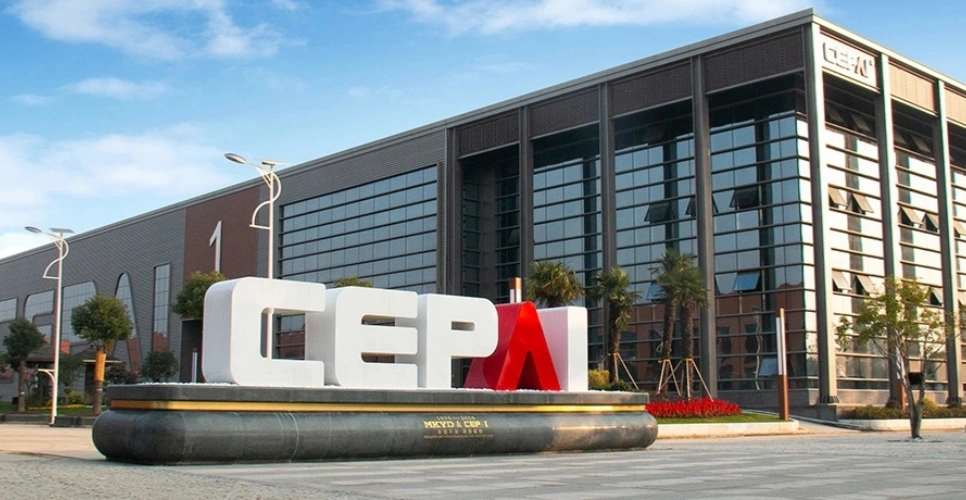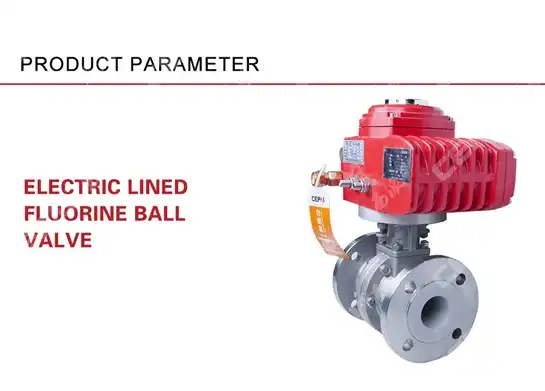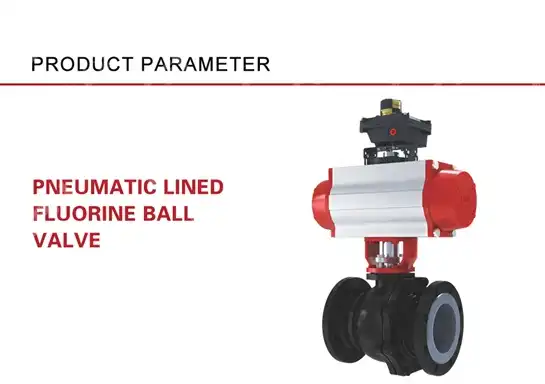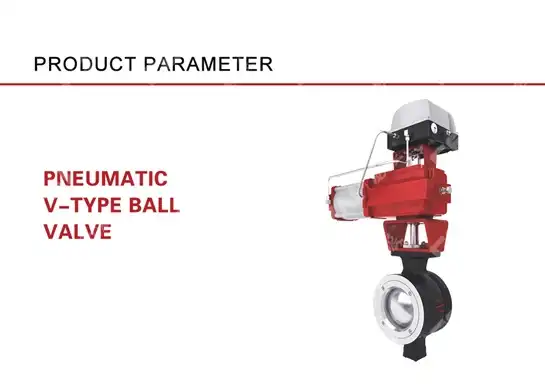A Complete Guide to Ball Valves for the Oil & Gas Industry
When oil and gas operations face critical safety challenges, equipment failures, or unplanned shutdowns costing millions in lost production, the choice of valve technology becomes paramount. Ball Valve systems serve as the backbone of flow control in petroleum operations, where a single malfunction can result in environmental disasters, safety hazards, and massive financial losses. This comprehensive guide addresses the critical pain points faced by oil and gas professionals, providing essential insights into Ball Valve selection, implementation, and optimization strategies that ensure operational excellence, safety compliance, and maximum productivity in the most demanding industrial environments.
Understanding Ball Valve Fundamentals in Oil & Gas Applications
-
Core Design Principles and Operational Mechanics
Ball Valve technology represents one of the most critical flow control solutions in oil and gas operations, where reliability, safety, and precision are non-negotiable requirements. The fundamental design of a Ball Valve consists of a spherical closure element that rotates within a valve body to control fluid flow, providing superior sealing capabilities and rapid shut-off functionality essential for petroleum applications. The ball element features a bore through its center that aligns with the pipeline when fully open, allowing unrestricted flow with minimal pressure drop, making Ball Valve systems ideal for high-pressure, high-volume petroleum operations where efficiency is paramount. The operational mechanism of Ball Valve systems relies on a quarter-turn rotation that moves the ball from fully open to fully closed positions, providing instantaneous flow control that is crucial in emergency shutdown scenarios common in oil and gas facilities. This rapid actuation capability makes Ball Valve technology indispensable for wellhead control systems, pipeline isolation, and emergency response applications where immediate flow cessation can prevent catastrophic incidents. The inherent design characteristics of Ball Valve systems, including their ability to maintain tight sealing under extreme pressure and temperature conditions, position them as preferred solutions for upstream, midstream, and downstream petroleum operations.

-
Material Engineering and Construction Standards
The construction materials used in Ball Valve manufacturing for oil and gas applications must withstand the most demanding operational environments, including exposure to corrosive hydrocarbons, extreme temperatures ranging from arctic conditions to high-temperature processing, and pressures that can exceed thousands of PSI. Premium Ball Valve systems utilize advanced materials such as stainless steel, carbon steel, and specialized alloys that provide exceptional resistance to hydrogen sulfide, carbon dioxide, and other corrosive compounds commonly found in petroleum operations. The manufacturing process for oil and gas Ball Valve systems incorporates precision machining, advanced metallurgy, and rigorous quality control protocols that ensure each component meets or exceeds industry standards such as API 6A, API 6D, and ASME specifications. The ball element itself requires precise spherical geometry and surface finish to achieve the tight sealing performance demanded by petroleum applications, while the valve body must withstand the mechanical stresses imposed by high-pressure operations and thermal cycling. Seat materials in Ball Valve systems often utilize advanced polymers or metal-to-metal sealing configurations that maintain integrity throughout the operational lifecycle, ensuring consistent performance and minimizing maintenance requirements.
Ball Valve Types and Classification for Petroleum Operations
-
Floating Ball Valve Systems
Floating ball Ball Valve designs represent the most widely deployed configuration in oil and gas applications where moderate pressure conditions and reliable sealing performance are required. In floating ball Ball Valve systems, the spherical closure element is not mechanically fixed but instead floats within the valve body, allowing downstream pressure to push the ball against the upstream seat, creating a pressure-energized sealing effect that improves with increasing system pressure. The floating ball design offers significant advantages in petroleum applications, including simplified construction, reduced manufacturing costs, and excellent sealing performance under typical operating conditions. These Ball Valve systems are particularly well-suited for pipeline isolation, process control, and general service applications where pressures remain within moderate ranges. The self-energizing sealing mechanism inherent in floating ball Ball Valve designs ensures consistent performance throughout the operational lifecycle, while the relatively simple construction facilitates maintenance and repair procedures. However, floating ball Ball Valve systems may experience limitations in high-pressure applications where excessive force on the downstream seat could compromise sealing integrity or cause premature wear.
-
Trunnion Mounted Ball Valve Systems
Trunnion mounted Ball Valve configurations are engineered for the most demanding oil and gas applications where high pressures, large bore sizes, and maximum operational reliability are essential requirements. In trunnion mounted Ball Valve systems, the spherical closure element is mechanically supported by upper and lower bearings or trunnions that absorb the forces generated by system pressure and actuator torque, preventing these loads from being transmitted to the valve seats. This advanced Ball Valve design enables operation at significantly higher pressures than floating ball configurations while maintaining precise control and sealing performance. Trunnion mounted Ball Valve systems are particularly advantageous in large diameter applications where the forces acting on a floating ball would be excessive, potentially compromising sealing integrity or requiring prohibitively high actuator torques. The mechanical support provided by the trunnion mounting system also enables the use of spring-loaded seats that maintain consistent sealing force regardless of pressure variations, ensuring reliable performance throughout the operational range. These sophisticated Ball Valve systems are commonly specified for critical service applications, including wellhead control, high-pressure transmission lines, and processing facility isolation where failure is not an option.
-
Multi-Port Ball Valve Configurations
Multi-port Ball Valve systems provide sophisticated flow control capabilities that enable diversion, mixing, and distribution of petroleum fluids through multiple pipeline connections within a single valve assembly. These specialized Ball Valve configurations utilize complex ball geometries with multiple ports and passages that align with different outlet connections depending on the rotational position, allowing operators to redirect flow between various pipeline branches without the need for multiple individual valves. The application of multi-port Ball Valve systems in oil and gas operations provides significant advantages including reduced installation space, simplified piping configurations, and enhanced operational flexibility. These advanced Ball Valve designs are particularly valuable in manifold applications, well testing operations, and process facilities where multiple flow paths must be managed efficiently. The sophisticated internal geometry of multi-port Ball Valve systems requires precision manufacturing and careful attention to sealing arrangements to ensure that all inactive ports remain leak-tight while maintaining optimal flow characteristics through the active flow path. Proper selection and configuration of multi-port Ball Valve systems can significantly reduce the complexity and cost of piping systems while improving operational reliability and maintenance accessibility.
Critical Performance Parameters and Selection Criteria
-
Pressure and Temperature Specifications
The selection of appropriate Ball Valve systems for oil and gas applications requires careful evaluation of pressure and temperature specifications that encompass both normal operating conditions and potential emergency or upset scenarios. Ball Valve pressure ratings must account for the maximum anticipated system pressure, including potential pressure surges caused by thermal expansion, pump starting, or emergency shutdown events. Temperature considerations for Ball Valve selection must address both the operating fluid temperature and ambient environmental conditions, as extreme cold can affect material properties and sealing performance while high temperatures can compromise elastomeric components and cause thermal expansion issues. Modern Ball Valve systems designed for oil and gas service incorporate advanced materials and design features that enable operation across wide pressure and temperature ranges, with premium configurations capable of handling pressures exceeding 15,000 PSI and temperatures ranging from -50°F to 450°F or higher. The pressure-temperature relationship in Ball Valve specifications follows established industry standards that define maximum allowable working pressures at various temperatures, ensuring safe operation throughout the anticipated service envelope. Proper Ball Valve selection requires comprehensive analysis of the complete operating envelope, including consideration of transient conditions, seasonal variations, and potential future operating requirement changes that might affect pressure and temperature demands.
-
Flow Characteristics and Cv Ratings
Flow performance characteristics of Ball Valve systems are critical parameters that directly impact system efficiency, energy consumption, and operational costs in oil and gas applications. The flow coefficient (Cv) of a Ball Valve represents the volume of water in gallons per minute that will flow through the valve at a pressure drop of one PSI, providing a standardized method for comparing flow capacity between different valve designs and sizes. Ball Valve systems typically exhibit excellent flow characteristics with relatively low pressure drops when fully open, as the spherical ball design with full-port bore provides an unobstructed flow path that minimizes turbulence and energy losses. The flow characteristics of Ball Valve systems can vary significantly between different designs, with full-port configurations offering maximum flow capacity while reduced-port designs may be specified where lower flow rates or higher pressure drops are acceptable in exchange for reduced costs or smaller actuator requirements. Proper evaluation of Ball Valve flow characteristics requires consideration of the complete system hydraulics, including upstream and downstream piping configurations, fluid properties, and operational flow rate requirements across the full range of operating conditions.
Installation and Maintenance Best Practices
-
Proper Installation Procedures and System Integration
The successful installation of Ball Valve systems in oil and gas applications requires adherence to rigorous procedures that ensure optimal performance, safety, and longevity throughout the operational lifecycle. Pre-installation planning for Ball Valve systems must include comprehensive review of system requirements, verification of valve specifications, inspection of all components, and preparation of installation tooling and support equipment. The installation environment must be properly prepared with adequate access for maintenance, appropriate foundation or support structures, and consideration of thermal expansion effects that could impose stresses on the Ball Valve assembly. Proper Ball Valve installation begins with careful handling and storage procedures that protect critical sealing surfaces and internal components from damage or contamination. The valve body must be properly aligned with the pipeline system to avoid imposing bending moments or thermal stresses that could affect sealing performance or cause premature failure. Installation procedures for Ball Valve systems must include verification of proper torque specifications for all bolted connections, careful attention to gasket and seal installation, and comprehensive testing of the completed installation to verify proper operation and leak-tight integrity. Post-installation commissioning of Ball Valve systems should include operational testing under actual service conditions, calibration of position indication systems, and documentation of baseline performance parameters for future reference.
-
Preventive Maintenance and Lifecycle Management
Effective maintenance programs for Ball Valve systems in oil and gas service are essential for ensuring reliable operation, maximizing service life, and minimizing unplanned downtime that can result in significant production losses and safety risks. Preventive maintenance strategies for Ball Valve systems must be tailored to the specific operating environment, service conditions, and criticality of the application, with more frequent inspections and maintenance activities required for valves in severe service or critical safety applications. Regular inspection protocols for Ball Valve systems should include visual examination of external components for signs of leakage, corrosion, or mechanical damage, verification of proper actuator operation and position indication, and monitoring of operating torque requirements that may indicate internal wear or fouling conditions. Internal inspection of Ball Valve systems requires careful disassembly procedures that protect sealing surfaces and critical components while allowing thorough evaluation of ball condition, seat wear, and seal integrity. Maintenance procedures for Ball Valve systems must include proper cleaning and decontamination protocols, replacement of worn or damaged components with genuine parts that meet original specifications, and comprehensive testing to verify proper reassembly and operational performance. Documentation of maintenance activities, including photographic records of component conditions and measurement data, provides valuable trending information that enables predictive maintenance strategies and optimized replacement schedules.

Industry Standards and Regulatory Compliance
-
API and ASME Certification Requirements
Compliance with industry standards and regulatory requirements is fundamental to the successful deployment of Ball Valve systems in oil and gas operations, where safety, environmental protection, and operational reliability are subject to stringent oversight and enforcement. The American Petroleum Institute (API) has developed comprehensive standards specifically addressing Ball Valve requirements for petroleum service, including API 6A for wellhead equipment, API 6D for pipeline valves, and API 602 for compact steel gate, globe, and ball valves. API 6D represents the primary standard governing Ball Valve design, manufacturing, and testing for pipeline applications in the oil and gas industry, establishing requirements for materials, design verification, manufacturing quality control, and performance testing that ensure reliable operation under the demanding conditions encountered in petroleum service. The standard specifies requirements for pressure-temperature ratings, fire testing, fugitive emissions testing, and extended service life validation that provide confidence in long-term performance and regulatory compliance. ASME standards, particularly ASME B16.34 for valves flanged, threaded, and welding end, provide additional design and material requirements that complement API specifications and ensure compatibility with broader industry practices. Compliance with these standards requires comprehensive documentation, third-party testing and certification, and ongoing quality management systems that maintain consistent manufacturing quality and traceability throughout the product lifecycle.
-
Environmental and Safety Regulations
Environmental regulations governing Ball Valve applications in oil and gas operations have become increasingly stringent, with particular emphasis on fugitive emissions control, leak detection and repair (LDAR) programs, and environmental protection measures that minimize the impact of petroleum operations on air and water quality. Ball Valve systems must comply with EPA regulations including 40 CFR 60 Subpart OOOO for new source performance standards and 40 CFR 63 Subpart HH for national emission standards for hazardous air pollutants from oil and natural gas production facilities. These regulations establish specific requirements for Ball Valve fugitive emissions performance, including maximum allowable leak rates, testing protocols, and monitoring frequencies that ensure environmental compliance throughout the operational lifecycle. Modern Ball Valve designs incorporate advanced sealing technologies, including low-emission packing systems and bellows-sealed configurations that minimize fugitive emissions while maintaining operational reliability. Safety regulations, including OSHA requirements for process safety management and mechanical integrity programs, mandate comprehensive inspection, testing, and maintenance procedures for Ball Valve systems in covered processes, requiring detailed documentation and qualified personnel for all activities affecting safety-critical equipment. Compliance with environmental and safety regulations requires ongoing commitment to training, documentation, and continuous improvement programs that ensure sustained compliance and operational excellence.
Conclusion
Ball Valve technology represents the cornerstone of safe and efficient flow control in oil and gas operations, providing the reliability, performance, and compliance capabilities essential for success in today's demanding petroleum industry. The comprehensive selection, installation, and maintenance of Ball Valve systems directly impacts operational safety, environmental compliance, regulatory adherence, and financial performance across upstream, midstream, and downstream applications. Through proper understanding of design principles, performance characteristics, and best practices outlined in this guide, oil and gas professionals can optimize their Ball Valve selections and maximize the return on investment while ensuring the highest standards of safety and environmental protection.
Cooperate with CEPAI Group Co., LTD.
CEPAI Group Co., LTD. stands as a premier China Ball Valve manufacturer and China Ball Valve supplier, established in 2009 with 200 million yuan registered capital and 56,000 square meters of advanced manufacturing facilities in Jiangsu Province. As a national high-tech enterprise and specialized "little giant" company, CEPAI has earned recognition as a Jiangsu Smart Factory and Internet benchmarking facility, winning the prestigious Mayor Quality Award in 2022. Our comprehensive Ball Valve for sale portfolio includes high-precision control Ball Valve systems, emergency shut-off Ball Valve configurations, and specialized wellhead Ball Valve solutions engineered for the most demanding oil and gas applications.
Our commitment to excellence is demonstrated through world-class certifications including API 6A, API 6D, ISO 9001, and Ball Valve SIL Certification, ensuring every High Quality Ball Valve meets the stringent requirements of global petroleum operations. CEPAI's 156 million yuan investment in intelligent manufacturing has created the longest high-precision flexible production line in the Asia Pacific region, combining advanced automation with rigorous quality control to deliver superior Ball Valve price value propositions. As your trusted China Ball Valve wholesale partner, we provide comprehensive pre-sales technical consultation, customized engineering solutions, professional installation support, and dedicated after-sales service backed by our CNAS nationally recognized laboratory and postdoctoral innovation practice base.
Partner with CEPAI Group Co., LTD. as your preferred China Ball Valve factory for exceptional durability, precision performance, and innovative solutions that maximize operational efficiency and safety in your oil and gas operations. Contact our technical experts today at cepai@cepai.com to discuss your Ball Valve requirements and discover how our High Quality Ball Valve solutions can enhance your project success. Save this guide for future reference and reach out whenever you need expert Ball Valve consultation and support.
FAQ
Q: What are the main differences between floating ball and trunnion mounted Ball Valve designs for oil and gas applications?
A: Floating ball Ball Valve systems use downstream pressure for sealing and are suitable for moderate pressures, while trunnion mounted Ball Valve designs provide mechanical support for high-pressure, large diameter applications requiring maximum reliability and precise control.
Q: How do pressure and temperature ratings affect Ball Valve selection in petroleum operations?
A: Ball Valve pressure-temperature ratings must encompass maximum system pressures including surges, with modern Ball Valve systems capable of handling pressures exceeding 15,000 PSI and temperatures from -50°F to 450°F while maintaining sealing integrity and operational reliability.
Q: What maintenance procedures are essential for maximizing Ball Valve service life in oil and gas environments?
A: Essential Ball Valve maintenance includes regular visual inspections, operational testing, internal component evaluation, proper cleaning and decontamination, genuine parts replacement, and comprehensive documentation to enable predictive maintenance and optimized replacement scheduling.
Q: Which industry standards govern Ball Valve applications in oil and gas operations?
A: Primary standards include API 6A for wellhead equipment, API 6D for pipeline Ball Valve systems, API 602 for compact valves, and ASME B16.34, along with environmental regulations like EPA 40 CFR 60 and safety requirements under OSHA process safety management programs.
References
1. American Petroleum Institute Standard API 6D: Pipeline Valves, 24th Edition, American Petroleum Institute, Washington, DC.
2. Johnson, R.K. and Smith, M.A.: "Advanced Ball Valve Technology for High-Pressure Oil and Gas Applications," Journal of Petroleum Technology, Society of Petroleum Engineers.
3. Wilson, P.T., Anderson, L.C., and Brown, D.M.: "Valve Selection and Maintenance Practices in Offshore Oil and Gas Operations," Offshore Technology Conference Proceedings.
4. Thompson, J.R.: "Materials Engineering for Severe Service Ball Valves in Petroleum Applications," Materials Performance Journal, NACE International.
_1746598563385.webp)
Get professional pre-sales technical consultation and valve selection services, customized solution services.

About CEPAI


